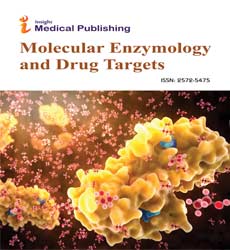Abstract
Use of Low Molecular Weight Heparin in Covid-19 patients
A number of organ-specific and systemic phenotypes have been added by the COVID-19 pandemic, others previously identified in viral infections, including severe acute respiratory syndrome (SARS) and others that seem to be unique to SARS-coronavirus (CoV)-2. The Coronavirus disease 2019 (COVID-19) pathogenesis is increasingly being recognized. Along with the mortality benefits of Heparin, a high number of thrombotic episodes are recorded. It is possible to view COVID-19 as a prothrombotic illness. Management recommendations are driven by increasingly evolving information from scientific observations, autopsy-based results, and extrapolations from in vitro and ex vivo experiments and complex modelling; however, several issues remain unanswered and scientific trials that are needed to include proof in most fields have not been conducted. Also, this is supported by several coagulation markers. COVID-19 can be considered as a thrombosis risk factor. Objective: The following review summarizes emerging findings into pathobiology, mechanism(s), diagnosis, administration, scientific foundations, and proposed or continuing COVID-19-associated coagulopathy clinical trials and use of Heparin in COVID-19 patients. Conclusion: Stratifying high-risk thrombosis patients, particularly the elderly, those with comorbidities and high D-Dimer levels is an important step to prevent thromboembolism in COVID-19 patients.
Author(s):
Aishwarya Anand*, Radhika. A. R
Abstract | Full-Text | PDF
Share this

Abstracted/Indexed in
- Google Scholar
- China National Knowledge Infrastructure (CNKI)
- Publons
- Secret Search Engine Labs
Open Access Journals
- Aquaculture & Veterinary Science
- Chemistry & Chemical Sciences
- Clinical Sciences
- Engineering
- General Science
- Genetics & Molecular Biology
- Health Care & Nursing
- Immunology & Microbiology
- Materials Science
- Mathematics & Physics
- Medical Sciences
- Neurology & Psychiatry
- Oncology & Cancer Science
- Pharmaceutical Sciences
